 View Video
View Video
July 24th, 2024, 01:06 PM EDT
As automakers race to electrify their model lineups, the competition to stand out has never been greater. Luckily, thanks to electrification, the opportunities to develop new designs are abundant. But if automakers want to succeed, designers need to seize these new opportunities and start developing the cars of the future.
Car companies have followed the same evolutionary design path for decades. Now, with electric cars, everything is changing quickly.
Without an internal combustion engine and a fuel tank, there are new design possibilities to explore. In most passenger vehicles, there is a large engine under the front hood and a fuel tank that takes up space somewhere under the vehicle. While there is, of course, a need for battery and electric motor placement in EVs, designers are not locked into this traditional framework and are able to package the batteries and motors differently.
When approaching design for this new era, automakers must introduce revolutionary cars, not evolutionary cars.
Automakers have a history of trying to make their electric cars “look like an EV.” For some reason, many thought an electric car needed to look “different” — and the result was often ugly. Historically, both the media and the general public have expressed distaste for electric car designs that stood out because they were electric, as opposed to just being a well-designed vehicle.
Recently, other brands have come along and proven that what people wanted in an electric car was good design without this niche “electric car” flare. There are several premium car brands right now achieving success with classic car designs for their electric models.
But this new look will be more aerodynamic and futuristic. These cars will need less front air intake and won’t need a grill on the front at all, since there is less need for airflow to cool the engine, and the designs will be more efficient in a quest to preserve battery life. There will be fewer big SUVs and more crossovers, sedans and fastbacks. But amongst all of this exterior adaptation, the interior of the car must also evolve.
In the interior, the screen and voice control become the main concerns, due to strong demand for connectivity. Gone are so many of the gauges needed to monitor a gasoline engine. The idea of a driver’s interior as a pilot’s cockpit with hundreds of switches and buttons is gone. More important to the consumer is the screen and the technology it offers. Brand expression will primarily come through user experience and digital design and less through the interior materials.
Changes in electric cars will change purchase habits by further emphasizing user experience. So many vehicles are currently sold to buyers who value engine size, cylinder count or transmission type. With an electric motor, a vehicle’s power becomes a commodity instead of a key product feature.
Lastly, we arrive at the external factors, most notably governmental crash standards, general vehicle legislation and other laws. While these standards must of course be followed, there is still potential for new exterior. Let’s spur the creativity of our EV engineers to develop new ways to arrange batteries, like we did in the design of our Polestar 2. We took a building-block approach and stacked the batteries to leave more footwell room in the backseat, and the place where the transmission tunnel usually goes now houses batteries. We can design innovative electric motors and devise revolutionary integration of technology within automobiles that would not be possible in traditional vehicle design.
Innovating in the electric vehicle space will require shorter-term product planning and the ability to pivot when it comes to product design and manufacturing, despite the industrial complications of doing so. China’s auto companies have done a great job here — they work fast with short-term planning, and their electric vehicle ecosystem and product offerings have a huge head start. Long-established car companies will need to learn to adapt and develop products faster than they currently are in order to keep up.
The electric revolution is here, and the possibilities for new automotive design are many. Let’s make this the remarkable new era in car design it deserves to be.
 View Video
View Video
July 24th, 2024, 01:06 PM EDT
 View Video
View Video
July 23rd, 2024, 04:28 AM EDT
 View Video
View Video
July 13th, 2024, 11:13 PM EDT
 View Video
View Video
July 11th, 2024, 05:54 AM EDT
 View Video
View Video
June 11th, 2024, 06:15 AM EDT
 View Video
View Video
May 30th, 2024, 05:59 PM EDT
 View Video
View Video
May 9th, 2024, 01:23 PM EDT
 View Video
View Video
May 9th, 2024, 05:38 AM EDT
 View Video
View Video
March 14th, 2024, 05:01 AM EDT
 View Video
View Video
February 8th, 2024, 05:22 AM EST
 View Video
View Video
January 30th, 2024, 12:50 PM EST
 View Video
View Video
January 15th, 2024, 02:04 PM EST
 View Video
View Video
December 14th, 2023, 07:45 AM EST
 View Video
View Video
December 5th, 2023, 07:37 AM EST
 View Video
View Video
November 28th, 2023, 04:58 AM EST
 View Video
View Video
November 21st, 2023, 04:54 AM EST
 View Video
View Video
November 16th, 2023, 05:39 AM EST
 View Video
View Video
November 7th, 2023, 04:05 AM EST
 View Video
View Video
November 2nd, 2023, 05:01 AM EDT
 View Video
View Video
October 26th, 2023, 04:53 AM EDT
 View Video
View Video
October 24th, 2023, 04:39 AM EDT
 View Video
View Video
October 20th, 2023, 05:10 AM EDT
 View Video
View Video
October 19th, 2023, 07:39 AM EDT
 View Video
View Video
August 30th, 2023, 11:49 AM EDT
 View Video
View Video
July 27th, 2023, 10:34 AM EDT
 View Video
View Video
June 15th, 2023, 01:21 PM EDT
 View Video
View Video
April 4th, 2023, 07:24 PM EDT
 View Video
View Video
March 29th, 2023, 07:19 PM EDT
 View Video
View Video
March 23rd, 2023, 05:55 AM EDT
 View Video
View Video
March 14th, 2023, 05:51 PM EDT
 View Video
View Video
March 8th, 2023, 05:56 PM EST
 View Video
View Video
March 1st, 2023, 06:27 PM EST
 View Video
View Video
February 23rd, 2023, 05:56 PM EST
 View Video
View Video
February 16th, 2023, 05:34 PM EST
 View Video
View Video
February 8th, 2023, 05:47 PM EST
 View Video
View Video
February 8th, 2023, 04:45 AM EST
 View Video
View Video
January 31st, 2023, 05:36 PM EST
 View Video
View Video
January 25th, 2023, 05:47 PM EST
 View Video
View Video
January 18th, 2023, 06:09 PM EST
 View Video
View Video
January 10th, 2023, 05:46 PM EST
 View Video
View Video
January 6th, 2023, 01:44 PM EST
 View Video
View Video
January 5th, 2023, 05:26 PM EST
 View Video
View Video
January 3rd, 2023, 08:12 AM EST
 View Video
View Video
December 29th, 2022, 05:06 PM EST
 View Video
View Video
December 26th, 2022, 10:23 AM EST
 View Video
View Video
December 22nd, 2022, 10:24 AM EST
 View Video
View Video
December 20th, 2022, 08:06 AM EST
 View Video
View Video
December 8th, 2022, 07:33 AM EST
 View Video
View Video
December 7th, 2022, 06:10 PM EST
 View Video
View Video
December 6th, 2022, 09:35 AM EST
 View Video
View Video
December 2nd, 2022, 12:03 PM EST
 View Video
View Video
November 22nd, 2022, 04:57 PM EST
 View Video
View Video
November 15th, 2022, 11:02 PM EST
 View Video
View Video
November 9th, 2022, 07:21 PM EST
 View Video
View Video
November 3rd, 2022, 06:00 PM EDT
 View Video
View Video
November 2nd, 2022, 06:49 PM EDT
 View Video
View Video
October 27th, 2022, 05:39 PM EDT
 View Video
View Video
October 25th, 2022, 09:26 AM EDT
 View Video
View Video
October 25th, 2022, 09:24 AM EDT
 View Video
View Video
October 20th, 2022, 07:41 PM EDT
 View Video
View Video
October 14th, 2022, 05:16 PM EDT
 View Video
View Video
October 6th, 2022, 06:10 PM EDT
 View Video
View Video
September 29th, 2022, 05:42 PM EDT
 View Video
View Video
September 22nd, 2022, 05:59 PM EDT
 View Video
View Video
September 22nd, 2022, 11:22 AM EDT
 View Video
View Video
September 15th, 2022, 04:58 PM EDT
 View Video
View Video
September 8th, 2022, 04:48 PM EDT
 View Video
View Video
August 31st, 2022, 04:51 PM EDT
 View Video
View Video
August 25th, 2022, 05:23 PM EDT
 View Video
View Video
August 18th, 2022, 04:08 PM EDT
 View Video
View Video
August 17th, 2022, 08:28 PM EDT
 View Video
View Video
August 17th, 2022, 10:21 AM EDT
 View Video
View Video
August 11th, 2022, 04:50 PM EDT
 View Video
View Video
August 3rd, 2022, 05:19 PM EDT
 View Video
View Video
August 1st, 2022, 06:37 PM EDT
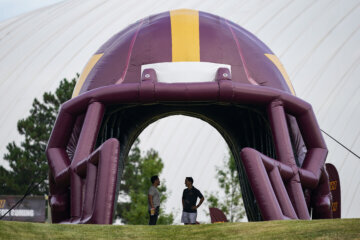 View Video
View Video
July 27th, 2022, 05:39 PM EDT
 View Video
View Video
July 20th, 2022, 04:20 PM EDT
 View Video
View Video
July 18th, 2022, 08:48 AM EDT
 View Video
View Video
July 6th, 2022, 03:45 PM EDT
 View Video
View Video
June 30th, 2022, 11:44 AM EDT
 View Video
View Video
June 29th, 2022, 04:23 PM EDT
 View Video
View Video
June 25th, 2022, 06:20 PM EDT
 View Video
View Video
June 24th, 2022, 11:59 PM EDT
 View Video
View Video
June 22nd, 2022, 06:18 PM EDT
 View Video
View Video
June 17th, 2022, 01:00 AM EDT
 View Video
View Video
June 15th, 2022, 04:48 PM EDT
 View Video
View Video
June 8th, 2022, 05:45 PM EDT
 View Video
View Video
June 1st, 2022, 06:13 PM EDT
 View Video
View Video
June 1st, 2022, 02:44 PM EDT
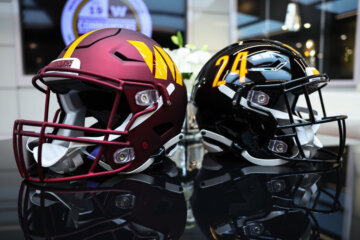 View Video
View Video
May 13th, 2022, 12:05 AM EDT
 View Video
View Video
May 2nd, 2022, 02:33 PM EDT
 View Video
View Video
April 27th, 2022, 05:16 PM EDT
 View Video
View Video
April 21st, 2022, 08:40 AM EDT
 View Video
View Video
April 20th, 2022, 06:04 PM EDT
 View Video
View Video
April 13th, 2022, 05:23 PM EDT
 View Video
View Video
April 6th, 2022, 05:23 PM EDT
 View Video
View Video
April 5th, 2022, 06:22 PM EDT
 View Video
View Video
March 24th, 2022, 08:28 AM EDT
 View Video
View Video
March 24th, 2022, 01:45 AM EDT
 View Video
View Video
March 23rd, 2022, 03:42 PM EDT
 View Video
View Video
March 22nd, 2022, 09:30 PM EDT
 View Video
View Video
March 9th, 2022, 04:12 PM EST
 View Video
View Video
March 2nd, 2022, 05:27 PM EST
 View Video
View Video
February 23rd, 2022, 06:16 PM EST
 View Video
View Video
February 16th, 2022, 05:10 PM EST
 View Video
View Video
February 9th, 2022, 06:32 PM EST
 View Video
View Video
February 9th, 2022, 04:12 AM EST
 View Video
View Video
February 3rd, 2022, 10:13 AM EST
 View Video
View Video
February 2nd, 2022, 06:43 PM EST
 View Video
View Video
February 2nd, 2022, 07:52 AM EST
 View Video
View Video
January 26th, 2022, 05:29 PM EST
 View Video
View Video
January 19th, 2022, 07:09 PM EST
 View Video
View Video
January 12th, 2022, 04:02 PM EST
 View Video
View Video
January 6th, 2022, 04:57 PM EST
 View Video
View Video
January 5th, 2022, 06:40 PM EST
 View Video
View Video
December 22nd, 2021, 02:54 PM EST
 View Video
View Video
December 22nd, 2021, 02:40 PM EST
 View Video
View Video
December 15th, 2021, 06:52 PM EST
 View Video
View Video
December 15th, 2021, 05:52 PM EST
 View Video
View Video
December 9th, 2021, 06:50 AM EST
 View Video
View Video
December 8th, 2021, 05:55 PM EST
 View Video
View Video
December 3rd, 2021, 07:51 AM EST
 View Video
View Video
December 1st, 2021, 06:16 PM EST
 View Video
View Video
November 24th, 2021, 06:23 PM EST
 View Video
View Video
November 17th, 2021, 06:59 PM EST
 View Video
View Video
November 10th, 2021, 06:39 PM EST
 View Video
View Video
November 3rd, 2021, 06:45 PM EDT
 View Video
View Video
October 27th, 2021, 08:22 PM EDT
 View Video
View Video
October 13th, 2021, 05:44 PM EDT
 View Video
View Video
October 6th, 2021, 05:06 PM EDT
 View Video
View Video
September 29th, 2021, 02:31 PM EDT
 View Video
View Video
September 22nd, 2021, 05:44 PM EDT
 View Video
View Video
September 21st, 2021, 05:24 PM EDT
 View Video
View Video
September 15th, 2021, 04:50 PM EDT
 View Video
View Video
September 13th, 2021, 10:48 AM EDT
 View Video
View Video
September 8th, 2021, 04:20 PM EDT
 View Video
View Video
September 7th, 2021, 09:30 PM EDT
 View Video
View Video
September 1st, 2021, 02:12 PM EDT
 View Video
View Video
August 24th, 2021, 02:15 PM EDT
 View Video
View Video
August 17th, 2021, 12:33 PM EDT
 View Video
View Video
August 10th, 2021, 02:40 PM EDT
 View Video
View Video
August 3rd, 2021, 02:01 PM EDT
 View Video
View Video
July 27th, 2021, 03:06 PM EDT
 View Video
View Video
July 20th, 2021, 01:08 PM EDT
 View Video
View Video
July 13th, 2021, 01:14 PM EDT
 View Video
View Video
July 6th, 2021, 01:56 PM EDT
 View Video
View Video
June 29th, 2021, 02:27 PM EDT
 View Video
View Video
June 25th, 2021, 06:52 PM EDT
 View Video
View Video
June 25th, 2021, 08:13 AM EDT
 View Video
View Video
June 25th, 2021, 08:02 AM EDT
 View Video
View Video
June 25th, 2021, 07:46 AM EDT
 View Video
View Video
June 8th, 2021, 02:03 PM EDT
 View Video
View Video
May 25th, 2021, 03:16 PM EDT
 View Video
View Video
May 11th, 2021, 02:00 PM EDT
 View Video
View Video
May 5th, 2021, 08:38 AM EDT
 View Video
View Video
May 5th, 2021, 06:35 AM EDT
 View Video
View Video
May 4th, 2021, 02:21 PM EDT
 View Video
View Video
April 27th, 2021, 03:29 PM EDT
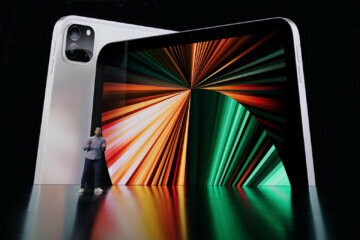 View Video
View Video
April 21st, 2021, 09:31 AM EDT
 View Video
View Video
April 20th, 2021, 02:36 PM EDT
 View Video
View Video
April 14th, 2021, 09:39 AM EDT
 View Video
View Video
April 13th, 2021, 02:36 PM EDT
 View Video
View Video
March 23rd, 2021, 03:41 PM EDT
 View Video
View Video
March 16th, 2021, 02:36 PM EDT
 View Video
View Video
March 11th, 2021, 09:05 PM EST
 View Video
View Video
March 9th, 2021, 02:08 PM EST
 View Video
View Video
March 4th, 2021, 08:09 AM EST
 View Video
View Video
March 3rd, 2021, 09:31 AM EST
 View Video
View Video
March 2nd, 2021, 09:10 AM EST
 View Video
View Video
February 25th, 2021, 09:45 AM EST
 View Video
View Video
February 23rd, 2021, 02:38 PM EST
 View Video
View Video
February 22nd, 2021, 03:19 PM EST
 View Video
View Video
February 16th, 2021, 03:09 PM EST
 View Video
View Video
February 10th, 2021, 07:45 PM EST
 View Video
View Video
February 3rd, 2021, 07:38 AM EST
 View Video
View Video
February 2nd, 2021, 09:25 PM EST
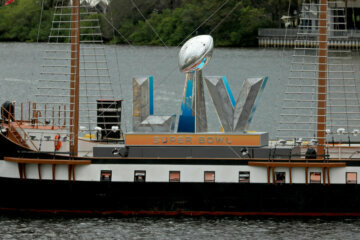 View Video
View Video
February 2nd, 2021, 03:14 PM EST
 View Video
View Video
January 26th, 2021, 03:13 PM EST
 View Video
View Video
January 21st, 2021, 08:31 AM EST
 View Video
View Video
January 20th, 2021, 11:00 PM EST
 View Video
View Video
January 19th, 2021, 03:47 PM EST
 View Video
View Video
January 12th, 2021, 02:58 PM EST
 View Video
View Video
January 12th, 2021, 08:51 AM EST
 View Video
View Video
December 29th, 2020, 09:29 PM EST
 View Video
View Video
December 22nd, 2020, 08:56 PM EST
 View Video
View Video
December 18th, 2020, 09:17 AM EST
 View Video
View Video
December 18th, 2020, 03:51 AM EST
 View Video
View Video
December 17th, 2020, 07:27 AM EST
 View Video
View Video
December 16th, 2020, 02:07 AM EST
 View Video
View Video
December 14th, 2020, 07:29 PM EST
 View Video
View Video
December 8th, 2020, 02:18 PM EST
 View Video
View Video
December 4th, 2020, 04:53 PM EST
 View Video
View Video
December 1st, 2020, 04:52 PM EST
 View Video
View Video
December 1st, 2020, 04:32 PM EST
 View Video
View Video
December 1st, 2020, 06:43 AM EST
 View Video
View Video
November 17th, 2020, 08:17 PM EST
 View Video
View Video
November 16th, 2020, 07:18 PM EST
 View Video
View Video
November 10th, 2020, 09:21 PM EST
 View Video
View Video
November 6th, 2020, 11:19 AM EST
 View Video
View Video
November 2nd, 2020, 10:46 AM EST
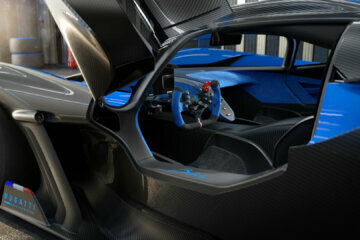 View Video
View Video
October 28th, 2020, 08:52 AM EDT
 View Video
View Video
October 25th, 2020, 07:59 AM EDT
 View Video
View Video
October 22nd, 2020, 10:52 PM EDT
 View Video
View Video
October 20th, 2020, 08:13 PM EDT
 View Video
View Video
October 16th, 2020, 11:31 PM EDT
 View Video
View Video
October 14th, 2020, 08:31 AM EDT
 View Video
View Video
October 13th, 2020, 09:11 PM EDT
 View Video
View Video
October 12th, 2020, 07:27 AM EDT
 View Video
View Video
October 7th, 2020, 10:19 PM EDT
 View Video
View Video
September 29th, 2020, 11:13 PM EDT
 View Video
View Video
September 25th, 2020, 03:36 PM EDT
 View Video
View Video
September 24th, 2020, 08:59 AM EDT
 View Video
View Video
September 24th, 2020, 08:12 AM EDT
 View Video
View Video
September 24th, 2020, 02:09 AM EDT
 View Video
View Video
September 23rd, 2020, 12:16 PM EDT
 View Video
View Video
September 17th, 2020, 02:14 PM EDT
 View Video
View Video
August 25th, 2020, 11:12 AM EDT
 View Video
View Video
August 21st, 2020, 08:19 AM EDT
 View Video
View Video
August 14th, 2020, 11:22 AM EDT
 View Video
View Video
August 14th, 2020, 05:38 AM EDT
 View Video
View Video
August 12th, 2020, 01:40 PM EDT
 View Video
View Video
July 31st, 2020, 03:10 PM EDT
 View Video
View Video
July 31st, 2020, 02:01 PM EDT
 View Video
View Video
July 31st, 2020, 01:00 PM EDT
 View Video
View Video
July 28th, 2020, 03:57 PM EDT
 View Video
View Video
July 27th, 2020, 10:30 PM EDT
 View Video
View Video
July 26th, 2020, 10:50 AM EDT
 View Video
View Video
July 25th, 2020, 06:45 PM EDT
 View Video
View Video
July 20th, 2020, 11:21 AM EDT
 View Video
View Video
July 20th, 2020, 08:44 AM EDT
 View Video
View Video
July 19th, 2020, 08:47 PM EDT
 View Video
View Video
June 26th, 2020, 09:34 AM EDT
 View Video
View Video
June 11th, 2020, 04:08 AM EDT
 View Video
View Video
June 10th, 2020, 02:57 PM EDT
 View Video
View Video
June 10th, 2020, 01:34 PM EDT
 View Video
View Video
June 9th, 2020, 12:56 AM EDT
 View Video
View Video
June 6th, 2020, 02:04 PM EDT
 View Video
View Video
June 2nd, 2020, 11:22 AM EDT
 View Video
View Video
May 29th, 2020, 11:01 AM EDT
 View Video
View Video
May 20th, 2020, 01:51 PM EDT
 View Video
View Video
May 19th, 2020, 01:15 PM EDT
 View Video
View Video
May 12th, 2020, 07:32 AM EDT
 View Video
View Video
May 5th, 2020, 02:24 PM EDT
 View Video
View Video
May 5th, 2020, 01:22 AM EDT
 View Video
View Video
May 4th, 2020, 10:14 PM EDT
 View Video
View Video
May 1st, 2020, 02:09 PM EDT
 View Video
View Video
April 29th, 2020, 09:52 AM EDT
 View Video
View Video
April 28th, 2020, 10:34 PM EDT
 View Video
View Video
April 28th, 2020, 11:56 AM EDT
 View Video
View Video
April 27th, 2020, 06:01 AM EDT
 View Video
View Video
April 15th, 2020, 03:49 PM EDT
 View Video
View Video
April 15th, 2020, 03:48 PM EDT
 View Video
View Video
April 14th, 2020, 01:07 PM EDT
 View Video
View Video
April 14th, 2020, 10:13 AM EDT
 View Video
View Video
April 13th, 2020, 05:49 PM EDT
 View Video
View Video
April 12th, 2020, 10:32 AM EDT
 View Video
View Video
April 10th, 2020, 05:13 AM EDT
 View Video
View Video
April 9th, 2020, 09:36 AM EDT
 View Video
View Video
April 3rd, 2020, 03:26 PM EDT
 View Video
View Video
March 30th, 2020, 09:58 AM EDT
 View Video
View Video
March 24th, 2020, 01:54 AM EDT
 View Video
View Video
March 23rd, 2020, 09:31 PM EDT
 View Video
View Video
March 23rd, 2020, 07:38 PM EDT
 View Video
View Video
March 20th, 2020, 10:47 AM EDT
 View Video
View Video
March 19th, 2020, 10:27 AM EDT
 View Video
View Video
March 18th, 2020, 10:51 AM EDT
 View Video
View Video
March 17th, 2020, 12:45 PM EDT
 View Video
View Video
March 17th, 2020, 10:39 AM EDT
 View Video
View Video
March 17th, 2020, 12:43 AM EDT
 View Video
View Video
March 11th, 2020, 07:23 PM EDT
 View Video
View Video
March 9th, 2020, 09:56 AM EDT
 View Video
View Video
March 9th, 2020, 08:35 AM EDT
 View Video
View Video
March 8th, 2020, 04:02 AM EDT
 View Video
View Video
February 28th, 2020, 10:32 AM EST
 View Video
View Video
February 26th, 2020, 05:21 PM EST
 View Video
View Video
February 25th, 2020, 06:24 PM EST
 View Video
View Video
February 21st, 2020, 07:45 AM EST
 View Video
View Video
February 20th, 2020, 08:17 AM EST
 View Video
View Video
February 20th, 2020, 06:51 AM EST
 View Video
View Video
February 19th, 2020, 09:03 PM EST
 View Video
View Video
February 19th, 2020, 10:02 AM EST
 View Video
View Video
February 14th, 2020, 03:30 PM EST
 View Video
View Video
February 13th, 2020, 07:20 AM EST
 View Video
View Video
February 13th, 2020, 07:18 AM EST
 View Video
View Video
February 12th, 2020, 11:22 AM EST
 View Video
View Video
February 12th, 2020, 10:35 AM EST
 View Video
View Video
February 12th, 2020, 07:17 AM EST
 View Video
View Video
February 11th, 2020, 02:56 PM EST
 View Video
View Video
February 11th, 2020, 11:53 AM EST
 View Video
View Video
February 7th, 2020, 06:06 PM EST
 View Video
View Video
February 5th, 2020, 11:05 AM EST
 View Video
View Video
February 3rd, 2020, 05:00 PM EST
 View Video
View Video
February 2nd, 2020, 07:30 AM EST
 View Video
View Video
January 29th, 2020, 12:19 PM EST
 View Video
View Video
January 29th, 2020, 07:41 AM EST
 View Video
View Video
January 26th, 2020, 05:35 PM EST
 View Video
View Video
January 25th, 2020, 09:36 AM EST
 View Video
View Video
January 19th, 2020, 03:18 PM EST
 View Video
View Video
January 17th, 2020, 01:26 PM EST
 View Video
View Video
January 16th, 2020, 12:25 PM EST
 View Video
View Video
January 15th, 2020, 09:50 AM EST
 View Video
View Video
January 10th, 2020, 10:09 AM EST
 View Video
View Video
January 9th, 2020, 10:57 AM EST
 View Video
View Video
January 7th, 2020, 02:23 PM EST
 View Video
View Video
January 7th, 2020, 11:57 AM EST
 View Video
View Video
January 7th, 2020, 09:43 AM EST
 View Video
View Video
January 7th, 2020, 01:37 AM EST
 View Video
View Video
January 2nd, 2020, 02:49 PM EST
 View Video
View Video
January 2nd, 2020, 11:39 AM EST
 View Video
View Video
January 1st, 2020, 04:40 PM EST
 View Video
View Video
January 1st, 2020, 06:41 AM EST
 View Video
View Video
December 31st, 2019, 10:46 AM EST
 View Video
View Video
December 31st, 2019, 10:15 AM EST
 View Video
View Video
December 30th, 2019, 03:39 PM EST
 View Video
View Video
December 30th, 2019, 12:11 PM EST
 View Video
View Video
December 24th, 2019, 10:32 AM EST
 View Video
View Video
December 13th, 2019, 08:26 AM EST
 View Video
View Video
December 12th, 2019, 07:56 AM EST
 View Video
View Video
December 11th, 2019, 05:35 PM EST
 View Video
View Video
December 10th, 2019, 08:28 AM EST
 View Video
View Video
December 5th, 2019, 08:33 AM EST
 View Video
View Video
December 4th, 2019, 07:51 AM EST
 View Video
View Video
December 4th, 2019, 03:18 AM EST
 View Video
View Video
December 2nd, 2019, 10:21 AM EST
 View Video
View Video
November 25th, 2019, 08:00 PM EST
 View Video
View Video
November 22nd, 2019, 03:15 PM EST
 View Video
View Video
November 22nd, 2019, 02:57 PM EST
 View Video
View Video
November 21st, 2019, 01:02 AM EST
 View Video
View Video
November 20th, 2019, 08:15 PM EST
 View Video
View Video
November 20th, 2019, 12:54 PM EST
 View Video
View Video
November 19th, 2019, 08:17 PM EST
 View Video
View Video
November 19th, 2019, 10:11 AM EST
 View Video
View Video
November 19th, 2019, 12:08 AM EST
 View Video
View Video
November 18th, 2019, 02:17 PM EST
 View Video
View Video
November 17th, 2019, 06:55 PM EST
 View Video
View Video
November 16th, 2019, 08:25 PM EST
 View Video
View Video
November 16th, 2019, 03:54 PM EST
 View Video
View Video
November 15th, 2019, 03:45 PM EST
 View Video
View Video
November 13th, 2019, 12:17 PM EST
 View Video
View Video
November 12th, 2019, 11:41 AM EST
 View Video
View Video
November 11th, 2019, 09:48 PM EST
 View Video
View Video
November 11th, 2019, 04:03 PM EST
 View Video
View Video
November 11th, 2019, 01:14 PM EST
 View Video
View Video
November 11th, 2019, 12:21 PM EST
 View Video
View Video
November 7th, 2019, 12:42 PM EST
 View Video
View Video
November 6th, 2019, 01:11 PM EST
 View Video
View Video
November 6th, 2019, 08:01 AM EST
 View Video
View Video
November 6th, 2019, 04:30 AM EST
 View Video
View Video
November 5th, 2019, 11:56 PM EST
 View Video
View Video
November 5th, 2019, 03:50 PM EST
 View Video
View Video
November 4th, 2019, 10:08 PM EST
 View Video
View Video
October 31st, 2019, 09:20 PM EDT
 View Video
View Video
October 29th, 2019, 02:23 PM EDT
 View Video
View Video
October 29th, 2019, 01:26 PM EDT
 View Video
View Video
October 29th, 2019, 09:13 AM EDT
 View Video
View Video
October 28th, 2019, 12:46 PM EDT
 View Video
View Video
October 28th, 2019, 07:30 AM EDT
 View Video
View Video
October 27th, 2019, 01:30 PM EDT
 View Video
View Video
October 26th, 2019, 01:22 PM EDT
 View Video
View Video
October 24th, 2019, 09:14 AM EDT
 View Video
View Video
October 23rd, 2019, 09:57 AM EDT
 View Video
View Video
October 22nd, 2019, 09:31 AM EDT
 View Video
View Video
October 21st, 2019, 05:54 PM EDT
 View Video
View Video
October 21st, 2019, 06:40 AM EDT
 View Video
View Video
October 18th, 2019, 11:37 AM EDT
 View Video
View Video
October 15th, 2019, 12:00 PM EDT
 View Video
View Video
October 15th, 2019, 08:15 AM EDT
 View Video
View Video
October 14th, 2019, 09:15 PM EDT
 View Video
View Video
October 14th, 2019, 03:01 PM EDT
 View Video
View Video
October 14th, 2019, 12:16 PM EDT
 View Video
View Video
October 10th, 2019, 08:26 AM EDT
 View Video
View Video
October 9th, 2019, 09:57 PM EDT
 View Video
View Video
October 9th, 2019, 11:28 AM EDT
 View Video
View Video
October 9th, 2019, 09:52 AM EDT
 View Video
View Video
October 8th, 2019, 06:38 PM EDT
 View Video
View Video
October 8th, 2019, 11:07 AM EDT
 View Video
View Video
October 8th, 2019, 06:35 AM EDT
 View Video
View Video
October 7th, 2019, 02:38 PM EDT
 View Video
View Video
October 7th, 2019, 10:20 AM EDT
 View Video
View Video
October 6th, 2019, 03:44 PM EDT
 View Video
View Video
October 4th, 2019, 11:18 AM EDT
 View Video
View Video
October 4th, 2019, 11:13 AM EDT
 View Video
View Video
October 3rd, 2019, 06:00 PM EDT
 View Video
View Video
October 3rd, 2019, 10:50 AM EDT
 View Video
View Video
October 3rd, 2019, 08:13 AM EDT
 View Video
View Video
October 2nd, 2019, 06:47 PM EDT
 View Video
View Video
October 2nd, 2019, 03:32 AM EDT
 View Video
View Video
October 1st, 2019, 05:14 PM EDT
 View Video
View Video
October 1st, 2019, 10:55 AM EDT
 View Video
View Video
October 1st, 2019, 02:58 AM EDT
 View Video
View Video
September 30th, 2019, 09:52 AM EDT
 View Video
View Video
September 29th, 2019, 07:23 PM EDT
 View Video
View Video
September 27th, 2019, 11:44 AM EDT
 View Video
View Video
September 27th, 2019, 09:50 AM EDT
 View Video
View Video
September 26th, 2019, 09:34 AM EDT
 View Video
View Video
September 26th, 2019, 05:21 AM EDT
 View Video
View Video
September 25th, 2019, 09:15 AM EDT
 View Video
View Video
September 25th, 2019, 06:59 AM EDT
 View Video
View Video
September 25th, 2019, 06:19 AM EDT
 View Video
View Video
September 24th, 2019, 11:22 AM EDT
 View Video
View Video
September 24th, 2019, 09:36 AM EDT
 View Video
View Video
September 23rd, 2019, 11:34 AM EDT
 View Video
View Video
September 23rd, 2019, 10:07 AM EDT
 View Video
View Video
September 20th, 2019, 11:24 AM EDT
 View Video
View Video
September 19th, 2019, 11:21 AM EDT
 View Video
View Video
September 18th, 2019, 11:09 AM EDT
 View Video
View Video
September 18th, 2019, 10:44 AM EDT
 View Video
View Video
September 18th, 2019, 09:32 AM EDT
 View Video
View Video
September 17th, 2019, 09:06 PM EDT
 View Video
View Video
September 17th, 2019, 10:43 AM EDT
 View Video
View Video
September 17th, 2019, 09:48 AM EDT
 View Video
View Video
September 16th, 2019, 11:44 AM EDT
 View Video
View Video
September 13th, 2019, 03:03 PM EDT
 View Video
View Video
September 13th, 2019, 11:34 AM EDT
 View Video
View Video
September 13th, 2019, 09:43 AM EDT
 View Video
View Video
September 11th, 2019, 11:21 PM EDT
 View Video
View Video
September 11th, 2019, 07:13 PM EDT
 View Video
View Video
September 11th, 2019, 02:41 PM EDT
 View Video
View Video
September 11th, 2019, 10:59 AM EDT
 View Video
View Video
September 10th, 2019, 04:59 PM EDT
 View Video
View Video
September 10th, 2019, 03:55 PM EDT
 View Video
View Video
September 10th, 2019, 03:24 PM EDT
 View Video
View Video
September 9th, 2019, 05:29 PM EDT
 View Video
View Video
September 9th, 2019, 10:00 AM EDT
 View Video
View Video
September 8th, 2019, 06:11 PM EDT
 View Video
View Video
September 8th, 2019, 03:05 PM EDT
 View Video
View Video
September 6th, 2019, 11:18 AM EDT
 View Video
View Video
September 6th, 2019, 09:52 AM EDT
 View Video
View Video
September 5th, 2019, 11:07 AM EDT
 View Video
View Video
September 4th, 2019, 12:35 PM EDT
 View Video
View Video
September 4th, 2019, 02:44 AM EDT
 View Video
View Video
September 3rd, 2019, 09:14 PM EDT
 View Video
View Video
September 3rd, 2019, 01:43 PM EDT
 View Video
View Video
August 28th, 2019, 11:34 AM EDT
 View Video
View Video
August 27th, 2019, 03:24 PM EDT
 View Video
View Video
August 22nd, 2019, 01:19 PM EDT
 View Video
View Video
August 21st, 2019, 09:01 AM EDT
 View Video
View Video
August 20th, 2019, 08:00 AM EDT
 View Video
View Video
August 19th, 2019, 07:32 AM EDT
 View Video
View Video
August 14th, 2019, 10:38 AM EDT
 View Video
View Video
August 14th, 2019, 09:10 AM EDT
 View Video
View Video
August 13th, 2019, 10:36 PM EDT
 View Video
View Video
August 13th, 2019, 11:31 AM EDT
 View Video
View Video
August 12th, 2019, 06:33 PM EDT
 View Video
View Video
August 12th, 2019, 11:16 AM EDT
 View Video
View Video
August 12th, 2019, 07:41 AM EDT
 View Video
View Video
August 9th, 2019, 10:21 AM EDT
 View Video
View Video
August 7th, 2019, 11:18 AM EDT
 View Video
View Video
August 7th, 2019, 09:53 AM EDT
 View Video
View Video
August 7th, 2019, 09:04 AM EDT
 View Video
View Video
August 7th, 2019, 07:22 AM EDT
 View Video
View Video
August 6th, 2019, 03:59 PM EDT
 View Video
View Video
August 6th, 2019, 03:06 PM EDT
 View Video
View Video
August 5th, 2019, 12:41 PM EDT
 View Video
View Video
August 5th, 2019, 04:27 AM EDT
 View Video
View Video
August 5th, 2019, 03:45 AM EDT
 View Video
View Video
August 2nd, 2019, 11:19 AM EDT
 View Video
View Video
August 2nd, 2019, 11:10 AM EDT
 View Video
View Video
July 31st, 2019, 09:39 AM EDT
 View Video
View Video
July 31st, 2019, 04:52 AM EDT
 View Video
View Video
July 31st, 2019, 04:39 AM EDT
 View Video
View Video
July 30th, 2019, 02:53 PM EDT
 View Video
View Video
July 30th, 2019, 01:33 PM EDT
 View Video
View Video
July 30th, 2019, 11:01 AM EDT
 View Video
View Video
July 28th, 2019, 04:18 AM EDT
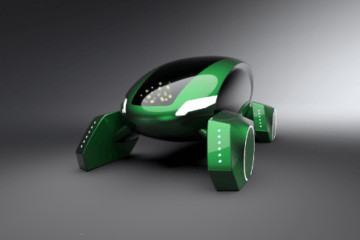 View Video
View Video
July 26th, 2019, 09:41 AM EDT
 View Video
View Video
July 25th, 2019, 07:51 AM EDT
 View Video
View Video
July 24th, 2019, 01:40 PM EDT
 View Video
View Video
July 23rd, 2019, 08:04 AM EDT
 View Video
View Video
July 22nd, 2019, 10:15 AM EDT
 View Video
View Video
July 19th, 2019, 07:20 PM EDT
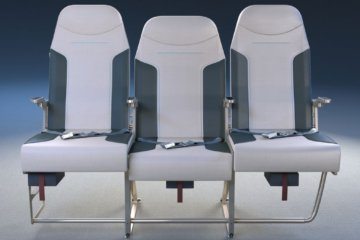 View Video
View Video
July 19th, 2019, 12:05 PM EDT
 View Video
View Video
July 19th, 2019, 04:40 AM EDT
 View Video
View Video
July 18th, 2019, 08:26 AM EDT
 View Video
View Video
July 17th, 2019, 04:12 PM EDT
 View Video
View Video
July 17th, 2019, 01:07 PM EDT
 View Video
View Video
July 16th, 2019, 10:42 AM EDT
 View Video
View Video
July 15th, 2019, 02:34 PM EDT
 View Video
View Video
July 15th, 2019, 10:11 AM EDT
 View Video
View Video
July 12th, 2019, 10:51 AM EDT
 View Video
View Video
July 11th, 2019, 07:39 PM EDT
 View Video
View Video
July 11th, 2019, 11:28 AM EDT
 View Video
View Video
July 11th, 2019, 07:54 AM EDT
 View Video
View Video
July 10th, 2019, 12:08 PM EDT